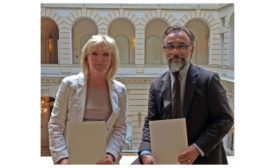Home » natural refrigerants
Articles Tagged with ''natural refrigerants''
Organization built on technician training, price, and regulatory activity surrounding natural gases
Read More
Constantly Changing Refrigerant Regulations Make Customers Wary
‘Didn’t we just do this?’ as GWP joins ODP in paving way for phaseouts
Read More
Natural Refrigerants Market Worth $1.4 Billion by 2020
Europe is the largest market for natural refrigerants
September 25, 2015
Refrigerants Market Worth $21 Billion by 2020
Stationary air conditioning dominates the refrigerants market
August 24, 2015
European Cooling Bodies Agree to Promote Use of Natural Refrigerants
Eurovent and eurammon sign memorandum of understanding over shared environmental goals
Read More
Shifting Standards Impacting Compressors
Trends in Efficiency, Environmental Regulations Influencing OEM Equipment
Read More
Jan. 23, 2015: Embraco Announces Technical Training Schedule for AHR Expo
The Training Will Be Held at the Company’s Booth
January 23, 2015
Copyright ©2024. All Rights Reserved BNP Media.
Design, CMS, Hosting & Web Development :: ePublishing









